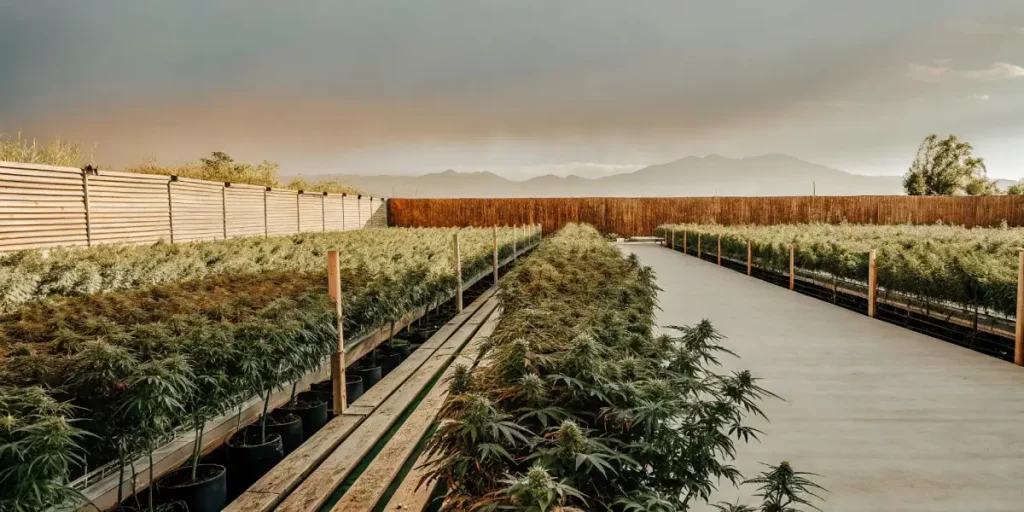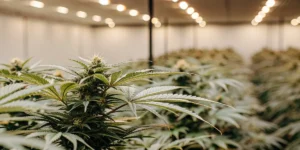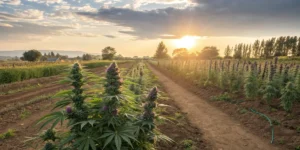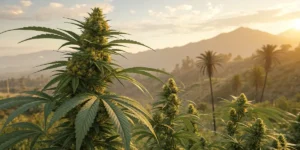Growing autoflowers outdoors can be a rewarding venture for both newbies and seasoned cultivators. These resilient plants don’t rely on light cycles to flower, making them ideal for various climates. Their ability to thrive in diverse conditions often results in a successful harvest.
With outdoor autoflower growing methods and tricks, you’ll harness the full potential of these plants. A few adjustments to your gardening practices can significantly enhance your harvest. Whether you’re growing in your backyard or a small patch of land, autoflowers adapt well to their environment.
Knowing the climate considerations for outdoor autoflower growing is crucial. Autoflowers are typically hardy, but knowing your local weather patterns will help you choose the right strains and timing for planting. This knowledge will ultimately maximize yields for outdoor autoflowers.
Choosing the Right Strain
Selecting an appropriate cannabis strain is key to a successful outdoor grow. Autoflowering strains from Global Green Genetics such as Northern Lights, Blue Dream, and White Widow offer robust growth and impressive yields.
Northern Lights is known for its resilience and ease of growth, making it perfect for those just starting. Blue Dream, on the other hand, provides a balanced high and is favored for its versatility across different climates. White Widow is celebrated for its potency and adaptability.
Exploring various strains allows growers to find the perfect match for their specific environment. Each strain brings unique qualities that can complement the conditions of your growing area, ensuring a more tailored approach to cultivation. Paying attention to these nuances can lead to superior outcomes when growing autoflowers outdoors.
Trial and experimentation with small batches can be beneficial in determining the best strains for your needs. This approach allows you to fine-tune your choices, optimizing for both quality and quantity. With experience, you’ll become adept at selecting strains that thrive in your local setting, enhancing the overall success of your growing efforts.
Consider Climate and Environment
Climate considerations for outdoor autoflower growing are fundamental. In warmer regions, strains like Blue Dream thrive due to their heat tolerance. In contrast, cooler climates benefit from the hardiness of Northern Lights. Knowing your local weather helps in making the right choice.
It’s essential to monitor temperature fluctuations. Autoflowers can endure some stress but keeping them within an optimal range leads to better results. In areas with unpredictable weather, planting in pots allows for mobility to protect plants from extreme conditions.
Observing microclimates within your growing space can also be advantageous. Areas with natural windbreaks or regions that receive early morning sun can positively influence plant health. Leveraging these microclimates can serve as a strategic advantage, fostering more resilient growth.
Integrating technology, such as weather apps and soil moisture sensors, can further enhance your awareness of environmental factors. This data-driven approach empowers you to make informed decisions, ensuring that your plants receive the care they need to flourish.
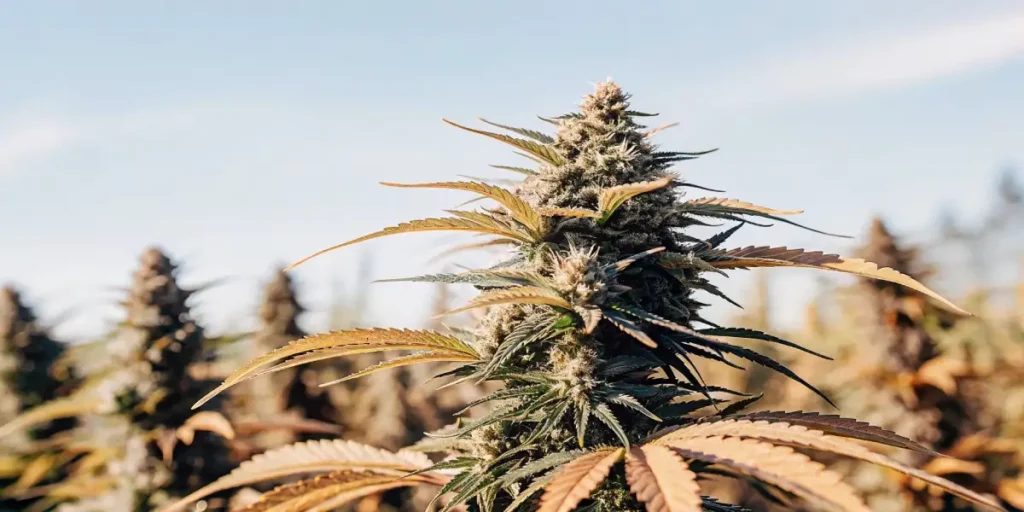
Optimal soil for growing autoflowers outdoors: what you need to know
The soil you choose is paramount in growing autoflowers outdoors. Autoflowering plants prefer well-draining soil rich in organic matter. A mix of peat moss, compost, and perlite can create the ideal environment.
Before planting, test your soil’s pH level. Autoflowers thrive in slightly acidic to neutral soil, ideally between 6.0 and 7.0 pH. Adjusting your soil accordingly can make a significant difference in plant health.
Amending your soil with additional organic materials can further enhance its properties. Ingredients such as bat guano or worm castings can introduce vital nutrients, promoting vigorous growth. Regular soil amendments align with the best practices for outdoor autoflower cultivation, ensuring robust plant development.
Knowing the texture and composition of your soil can assist in making smarter amendments. Sandy soils may require more organic matter to retain moisture, while clay soils benefit from components that improve drainage. Tailoring your soil management techniques to its inherent properties optimizes the growing conditions for your autoflowers.
Preparing the Soil
Begin by clearing the area of weeds and debris. This ensures that your autoflowers don’t compete for nutrients. A thorough tilling of the soil helps in aeration, promoting root development.
Incorporating compost into your soil boosts its nutrient content. Compost provides a steady release of nutrients, which is beneficial for the autoflower’s quick growth cycle. It’s one of the best practices for outdoor autoflower cultivation.
Mulching after planting can be advantageous in conserving soil moisture and suppressing weed growth. Organic mulches, such as straw or wood chips, gradually decompose, adding further nutrients to the soil. This practice supports the longevity and health of your plants throughout their lifecycle.
Regular soil testing is another valuable technique in managing soil fertility. Knowing nutrient levels and deficiencies enables targeted interventions, ensuring your plants receive comprehensive support. This precision in soil care is integral to maximizing yields for outdoor autoflowers.
Watering and Nutrient Management
When growing autoflowers outdoors, it’s important to manage watering carefully during their rapid growth phase. Autoflowers require consistent moisture, but they are prone to over-watering, which can stunt growth. The goal is to keep the soil moist but not soggy to promote healthy root systems.
Nutrient management is equally important. Autoflowers need a balanced supply of nitrogen, phosphorus, and potassium. During the vegetative stage, a higher nitrogen content is beneficial, while in flowering, phosphorus and potassium are critical.
Implementing a watering schedule that aligns with your local climate and soil type can prevent common issues. Monitoring rainfall and adjusting your approach during dry spells ensures that your plants receive the moisture they require without excess.
Using foliar sprays during the vegetative stage can be a proactive measure in nutrient management. These sprays deliver essential nutrients directly to the leaves, supporting robust growth. Integrating such techniques into your routine aligns with outdoor autoflower growing tips and tricks that lead to healthier plants.
Using Natural Fertilizers
Natural fertilizers like fish emulsion or bone meal can be excellent for outdoor autoflower plants. These organic options release nutrients slowly, aligning with the plant’s needs during its lifecycle.
Top-dressing with compost or worm castings can also enrich your soil. These additions provide essential micronutrients that enhance plant vitality and growth.
Exploring local resources for natural fertilizers can be an economical and sustainable choice. Many communities offer composting programs or access to animal-based fertilizers, reducing the need for synthetic products. This approach not only contributes to environmental stewardship but also supports optimal soil for outdoor autoflower plants.
Partnering with fellow gardeners or agricultural groups can also yield insights into effective organic fertilization techniques. Sharing knowledge and resources fosters a collaborative spirit, enriching your growing experience and outcomes.
Protecting your plants when growing autoflowers outdoors
Outdoor environments present challenges like pests and diseases. Using preventative measures such as neem oil or insecticidal soap can keep pests at bay. Regular inspections of your plants help catch any issues early.
Creating physical barriers, such as netting, can protect against larger pests like rabbits or deer. This added protection is crucial for safeguarding your investment and ensuring a successful harvest.
Emphasizing biodiversity in your garden can enhance pest control naturally. Companion planting with herbs or flowers that repel insects provides an eco-friendly defense. This strategy complements the best practices for outdoor autoflower cultivation by fostering a balanced ecosystem.
Integrating beneficial insects like ladybugs or predatory beetles can further bolster your pest management efforts. When growing autoflowers outdoors, these natural allies help control pest populations, reducing the need for chemical interventions and promoting a healthier garden environment.
Dealing with Weather Changes
Sudden weather changes can stress your plants. Having a contingency plan, such as using row covers or temporary greenhouses, can shield your plants from unexpected elements.
In areas prone to heavy rain, ensuring proper drainage is vital. Raised beds or planting in pots can prevent water accumulation around the roots.
Adapting your planting schedule to seasonal weather patterns can mitigate the impact of sudden changes. By timing your sowing to avoid extreme conditions, you provide your plants with a stable start, enhancing their resilience.
Leveraging local knowledge about weather trends can be invaluable. Engaging with community gardening groups or agricultural extensions provides insights into effective strategies for managing environmental fluctuations, contributing to maximizing yields for outdoor autoflowers.
Harvesting and Post-Harvest Care
Knowing the right time to harvest is key to maximizing yields for outdoor autoflowers. Trichomes, the tiny resin glands on the buds, should appear milky white with some amber hues for optimal potency.
Using sharp, clean tools, carefully trim the plants to avoid damaging the buds. Proper handling during this stage can impact the quality of your final product.
Timing your harvest based on strain-specific characteristics can enhance quality. Knowing the unique maturation period of each strain ensures that you capture peak potency and flavor, contributing to an exceptional final product.
Post-harvest, maintaining cleanliness and organization in your drying area is essential. Proper airflow and controlled humidity levels prevent mold and improve the curing process, safeguarding the fruits of your labor.

Curing for Quality
Once harvested, curing your buds enhances flavor and potency. If you’re growing autoflowers outdoors, place trimmed buds in glass jars and store them in a cool, dark place. Open the jars daily to release moisture and prevent mold.
The curing process can take several weeks, but patience pays off with smoother, more aromatic buds. This step is crucial for ensuring the best final product.
Monitoring environmental conditions during curing is vital. Maintaining stable temperatures and humidity levels in your storage area ensures a consistent and effective curing process. This attention to detail is a hallmark of successful outdoor autoflower cultivation.
Developing a personalized curing routine based on your preferences and experiences can refine your approach over time. Experimenting with different curing durations and techniques leads to a more nuanced knowing of how to achieve the desired quality in your harvest.
FAQs of growing autoflowers outdoors
Best practices for growing autoflowers outdoors successfully?
To ensure success when growing autoflowers outdoors, select the right strain for your climate. Preparing the soil with adequate nutrients and maintaining consistent watering schedules are crucial steps. Regular monitoring for pests and diseases can prevent potential problems early.
Utilize natural fertilizers and compost to enrich the soil. This provides a slow release of nutrients, supporting the plant’s rapid growth cycle. Additionally, consider implementing protective measures like netting to keep larger pests away from your plants.
Engaging with local gardening communities can offer fresh insights and shared experiences. Learning from others’ successes and challenges fosters a supportive environment that enhances growth techniques and results.
Continuously updating your knowledge through workshops, literature, and online resources ensures that you remain informed about new developments and innovations in outdoor autoflower growing. This commitment to learning aligns with optimizing your cultivation methods.
How do I choose the optimal soil for outdoor autoflower plants?
The optimal soil for outdoor autoflower plants should be well-draining and rich in organic matter. A mix of peat moss, compost, and perlite creates a nutrient-rich environment. Testing soil pH levels and adjusting them to a range of 6.0 to 7.0 ensures healthy plant growth.
Incorporating compost not only boosts nutrient content but also improves soil structure. This allows for better root development and water retention, essential for thriving autoflowers. Regularly checking soil moisture prevents over-watering and root rot.
Exploring local soil amendments can provide cost-effective and sustainable options for enhancing soil quality. Utilizing resources such as municipal compost or locally-sourced organic matter reduces the need for commercial products.
Analyzing soil health periodically with professional testing services can provide a comprehensive overview of nutrient levels and deficiencies. This data-driven approach empowers you to make informed adjustments, tailoring your soil management to meet the specific needs of your plants.
Growing autoflowers outdoors: what climate considerations should you keep in mind?
Considering your local climate is essential when growing autoflowers outdoors. Choose strains that are compatible with your region’s weather patterns. For instance, Northern Lights may do well in cooler climates, while Blue Dream suits warmer areas.
Monitor temperature and rainfall closely to protect your plants from extreme conditions. Planting in pots can offer flexibility, allowing you to move plants as needed to shield them from harsh weather.
Knowing seasonal weather shifts can inform your planting and harvesting strategies. By aligning your activities with natural climate cycles, you reduce the risk of adverse effects on plant health.
Collaborating with local agricultural experts or utilizing regional climate data can provide deeper insights into effective growing techniques. This informed approach helps optimize your efforts and maximize yields for outdoor autoflowers.
What are some outdoor autoflower growing tips and tricks?
One effective tip is to plant autoflowers in discrete but sunny locations to maximize sunlight exposure. Another trick is using organic pest deterrents like neem oil to keep harmful insects away without damaging the environment.
Training plants by gently bending branches can increase light penetration and airflow, leading to larger yields. Additionally, regular inspection for nutrient deficiencies and adjusting feeding schedules accordingly can optimize plant health.
Utilizing reflective materials around your plants can enhance light distribution, promoting more even growth. This technique can be particularly beneficial in areas with limited sunlight, boosting overall plant performance.
Integrating technology, such as automated irrigation systems or soil sensors, can enhance precision in your cultivation practices. These innovations align with outdoor autoflower growing tips and tricks that streamline your efforts and improve outcomes.
Growing autoflowers outdoors: how to maximize your yields?
To maximize yields for outdoor autoflowers, focus on soil quality and nutrient management. Rich, well-draining soil supports vigorous growth, while balanced nutrients ensure healthy development throughout the plant’s lifecycle.
Implementing techniques such as topping or low-stress training can increase bud sites, leading to higher yields. When growing autoflowers outdoors, consistent care, attention to climate, and timely harvesting also contribute to achieving the best possible results.
Researching and applying advanced pruning techniques can optimize plant structure and sunlight exposure. These methods encourage the development of multiple colas, increasing overall yield potential.
Engaging with online forums or grower communities can provide additional insights and strategies for yield maximization. Sharing experiences and learning from others fosters continuous improvement in your cultivation practices.

